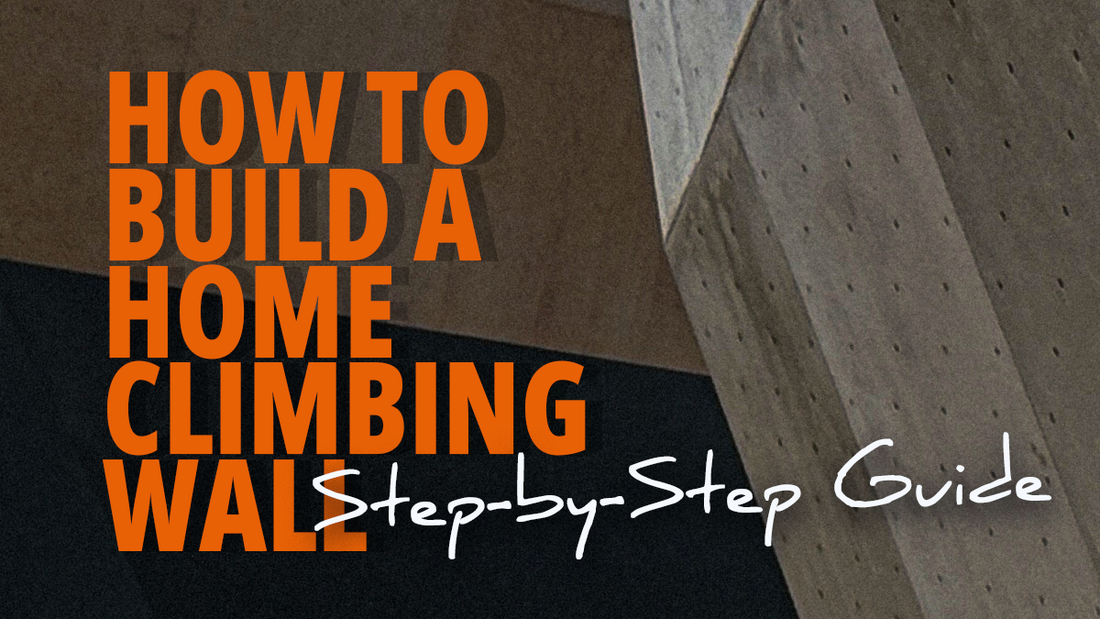
How to Build a Home Climbing Wall (Step-by-Step Guide)
Share
Climbing isn't just a sport—it's a way of life. So why leave it at the gym?
Whether you're craving midnight sends in your garage, want to get your kids vertical, or just need a space to train without waiting for the campus board to free up, a home wall is a game-changer. And building one? Easier than topping out your first V5 dyno. (Okay, almost easier.)
Here’s your step-by-step guide to building your own home climbing wall—designed for real climbers by the wall-building obsessives at Elevate Climbing Walls.
Step 1: Choose Your Location
Before you bust out the power tools, pick your space:
- Garage – Most popular. Ceiling height and studs? Chef’s kiss.
- Basement – Cooler temps, but watch for moisture and low ceilings.
- Spare room – Works great for kid walls or steep boards.
- Backyard – Yes, outdoor walls are a thing (weatherproof them).
✅ Pro tip: Measure your space three times, and imagine falling. You need not just climbing room, but landing room too.

Step 2: Design Your Wall
This is where your inner route setter gets to dream big.
Ask yourself:
- Do you want a spray wall (holds everywhere)?
- A moonboard/tension board (pre-set problems)?
- Or a custom route wall (less chaos, more curation)?

Also, decide on:
- Angle – 15 to 45 degrees overhang is common.
- Height – Keep it under 10 feet if you're indoors.
- Size – How many panels? 4x4' plywood is your standard.
Use free design tools like SketchUp or draw it old-school on graph paper. Just don’t wing it.

Step 3: Gather Your Materials
Here’s your shopping list:
Lumber
- 2x4s for framing
- 4x8' sheets of ¾" plywood (ACX grade is solid)
Hardware
- T-nuts (zinc-plated, hammer-in)
- Wood screws and lag bolts
- Carriage bolts for holds
Extras
- Crash pads or foam flooring
- Paint or texture (optional, but makes it pop)
- Holds (buy or make your own!)
🧰 Tools you'll need: Drill, saw, wrench, measuring tape, stud finder, safety goggles, and preferably a friend with building skills (or pizza motivation).

Step 4: Frame It Up
This is the skeleton of your wall. Secure 2x4s to the floor, ceiling, and wall studs for a stable base. Then:
- Add angled supports for overhangs
- Use joist hangers for clean connections
- Double-check that everything is plumb and level
🧠 Safety tip: Overbuild it. You’ll thank yourself when your cousin tries a backflip dyno.
Step 5: Add the Plywood
Drill holes for T-nuts before attaching the plywood! (Don’t skip this or you’ll be re-drilling with your face smashed against the wall.)
- Use a 3/8" bit for T-nut holes
- Space them ~6-8" apart in a grid
- Hammer in the T-nuts from the back
Once prepped, screw the plywood onto the frame. Use plenty of wood screws and drive them firmly into the studs.
Step 6: Install Holds
Time to bring it to life. Start with a mix of:
- Jugs (for warm-ups)
- Crimps and slopers (for challenge)
- Feet-only holds
- Volumes or macros if you’re fancy
Get creative. Make problems. Make them weird. Try new beta. Invite friends over and pretend you didn’t already work the crux for three days straight.

Step 7: Climb and Customize
Now the real fun begins:
- Add tape to mark routes
- Rotate holds every few weeks
- Install a hangboard or campus rung up top
- Light it up with LED strips or spotlights
🏆 Want to go pro? Add a timer, install an app-connected board system, or get your own custom holds made by Elevate.
Build Your Vertical Sanctuary
Building a home climbing wall is a combination of a DIY project and a personal playground. It doesn’t have to be expensive or perfect—it just has to get you moving. Sketch it out, grab your tools, and create a vertical sanctuary that’s 100% yours.
And if you want a wall that looks professional, climbs like a dream, and doesn’t require you to own a single power tool?
We do that.
Let’s Elevate.

